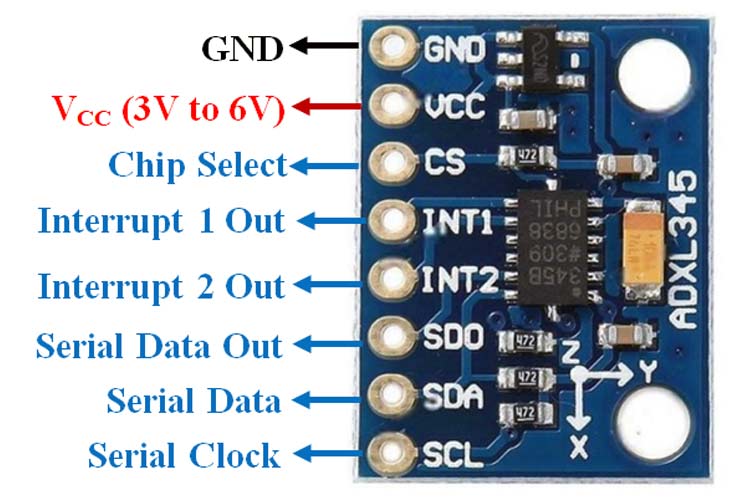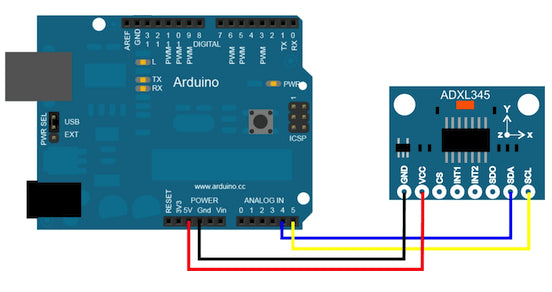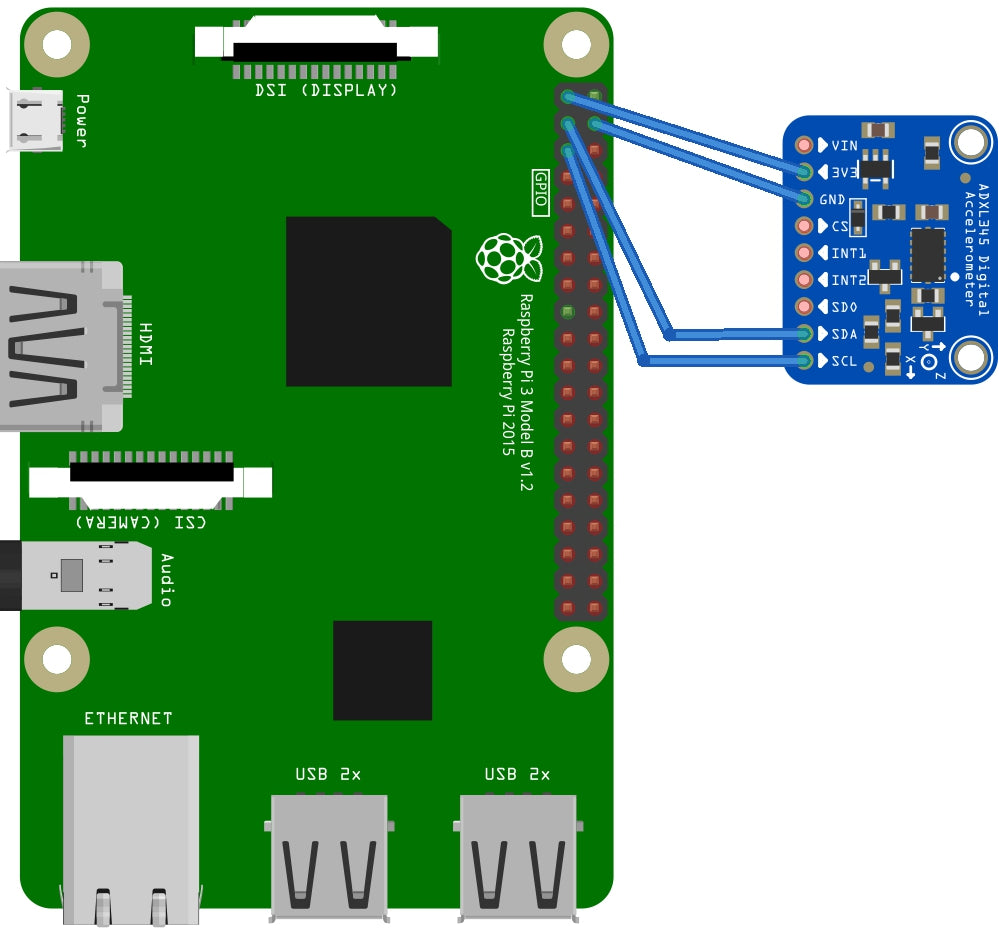ADXL345 Accelerometer Triple Axis Board
- Product SKU: KG022
Need Volume Discounts? Deals are specially designed for you. Click here
Need Customization? Provide us more details Click here
Warehouse Details

- Order within

Specification
Description
ADXL345 Accelerometer Arduino is a popular produced by Analog Devices. It is a digital ADXL345 accelerometer sensor that can measure acceleration in three perpendicular axes: X, Y, and Z. This sensor is commonly used in various applications, including robotics, motion sensing, gaming devices, and more.
Key Features of Adxl345 Accelerometer Arduino:
High Resolution: This adxl345 accelerometer Arduino provides high resolution, allowing it to measure even subtle changes in acceleration accurately.Digital Output: It communicates using digital interfaces such as I2C and SPI, making it easy to integrate with microcontrollers and other digital devices.
Low Power Consumption: This adxl345 accelerometer Arduino is designed to consume minimal power, making it suitable for battery-powered.
Selectable Range: The adxl345 accelerometer Arduino offers multiple selectable ranges, allowing you to adjust the measurement sensitivity based on your specific needs.
Data Rate Control: You can configure the output data rate to suit your application requirements.
Tap and Double-Tap Detection: The ADXL345 also supports tap and double-tap detection, enabling various interactive functionalities in devices.
Freefall Detection: It can detect when the device is in freefall, making it useful for applications like drop detection or anti-theft systems.
High-G Shock Detection: The ADXL345 accelerometer sensor can handle high-g shocks, making it suitable for applications in harsh environments. To use the ADXL345 Triple Axis Accelerometer Board in your project, you will typically need to connect it to a microcontroller or a development board using the I2C or SPI interface. You'll then be able to read acceleration data from the sensor and process it accordingly. Before using the ADXL345, make sure to check the datasheet and application notes provided by Analog Devices for detailed information on the sensor's electrical connections, register configurations, and programming instructions.
Applications of Adxl345 Accelerometer Arduino :
Motion Sensing: Use the ADXL345 accelerometer sensor to detect motion, acceleration, and changes in velocity. This is useful in applications like motion-activated lighting or gaming controllers.Gesture Recognition: Develop systems that can recognize gestures based on the accelerometer's readings. For example, you could create a wearable device that interprets hand gestures as commands.
Pinout Diagram of Adxl345 Accelerometer Arduino

Pin Configuration of Adxl345 Accelerometer Arduino
- GND: Ground Pin
- VCC: Power Supply pin (3V to 6V)
- CS: Chip Select Pin
- INT1: Interrupt 1 Output
- INT2: Interrupt 2 Output
- SDO: Serial Data Output
- SDA: Serial Data Input Output
- SDL: Serial Communication Clock
Technical Details of ADXL345 Accelerometer
- Input Supply Voltage (VDC): 3.3 ~ 5
- Interface Type: I²C, SPI
- Sensing Range : ±2g, ±4g, ±8g, ±16g
- X-Axis Sensitivity: 28.6 LSB/g
- Y-Axis Sensitivity: 31.2 LSB/g
- Z-Axis Sensitivity: 34.5 LSB/g
Physical Attributes of ADXL345 Accelerometer Sensor
- Length * Width * Height in mm : 20.5 * 15.5 * 3.5
- Weight in gm: 4
Integration with Arduino of Adxl345 Accelerometer Arduino

Sample Code
Integration with Raspberry Pi

Sample Code
Applications :
- Pointing devices.
- Handsets.
- Medical Instrumentation.
- Gaming.
- Industrial instrumentation.
- Personal navigation devices.
- Hard disk drive (HDD) protection.
- Fitness equipment.
- defense and aerospace.
Additional Details Of ADXL345 Module
- Ultra-Low Power: 40µA in measurement mode, 0.1µA in standby@ 2.5V.
- Free-Fall Detection.
- Tap/Double Tap Detection.
- Flexible interrupt modes mappable to either interrupt pin Measurement ranges selectable via serial command Bandwidth selectable via serial command
- Wide temperature range (−40°C to +85°C).
- 10,000 g shock survival.
- Support 5V/3.3V voltage input, onboard RT9161 power chip, lower pressure drop faster than 1117, the faster load speed of response, very suitable for high-noise power supply environment.
- User-selectable resolution
- Fixed 10-bit resolution.
- Full resolution, where resolution increases with the G range, up to 13-bit resolution at ±16 g (maintaining 4 mg/LSB scale factor in all G ranges).
Product Video
Documentation
- a- Datasheet
Package Includes
- 1 x ADXL345 Triple Axis Accelerometer Board






























